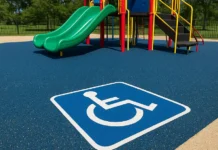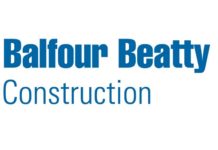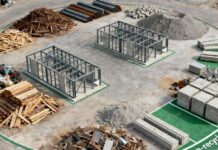The Revolution in Equipment Architecture
Construction equipment has evolved toward increasingly sophisticated specialization, with manufacturers developing purpose-built solutions for specific applications. This specialization improves performance for targeted uses yet creates inflexibility when project requirements diverge from design assumptions. Modular machinery design represents paradigm shift enabling equipment customization adapting to diverse operational needs while maintaining manufacturing efficiency and economic viability.
Modular machinery design fundamentally reimagines equipment architecture through standardized interfaces enabling rapid reconfiguration of core systems. Rather than monolithic designs integrating all functions, modular approaches enable users selecting specific capabilities matching their requirements. This flexibility proves particularly valuable for contractors operating diverse projects with varying equipment demands.
Foundational Principles of Modularity
Standardized Interfaces and Connection Points
Modular systems require standardized connection points enabling seamless integration of diverse components. Power interfaces standardizing hydraulic, electrical, and mechanical connections enable rapid component swapping without extensive redesign. Data interfaces standardizing information exchange between modules enable integrated operation despite component diversity.
Connection standardization extends beyond physical interfaces to control protocols and communication standards. Equipment modules sharing common control architectures operate seamlessly under unified supervisory systems. Operators and technicians encounter familiar interfaces across modular components reducing training requirements and improving confidence in system reliability.
Standardization benefits extend throughout equipment lifecycles. Manufacturing standardized modules enables production scale economies unavailable for specialized components. Service personnel trained on standardized interfaces can support diverse equipment configurations. Spare parts standardization enables inventory consolidation improving logistics efficiency.
Hierarchical System Architecture
Complex equipment benefits from hierarchical organization separating core systems from specialized attachments and accessories. Power generation systems providing hydraulic, electrical, and mechanical power form equipment foundation. Superstructure and working mechanisms attach through standardized interfaces enabling configuration variation while maintaining core system consistency.
This architecture enables equipment base design focusing on reliability, efficiency, and longevity while allowing specialization through attachment variation. Contractors can maintain standard base units acquiring specialized attachments matching specific project requirements. Over equipment lifetimes, varying project needs translate to different attachments rather than different machines.
Environmental control systems standardizing cab design, climate management, and operator interfaces anchor modular architectures. Shared power platforms support diverse actuators and controls ensuring consistent responsiveness across configurations. This standardization improves operator experience and reduces training requirements when transferring between equipment.
Equipment Customization and Performance Optimization
Configurable Power Systems
Modern construction equipment power requirements vary dramatically across applications. Some operations demand peak power for short durations, others require sustained moderate power. Traditional equipment designs compromise between extremes, optimizing for typical cases while accepting suboptimal performance in specific scenarios. Modular power systems enable matching available power to operational requirements.
Variable displacement pumps enabling pump output adjustment to actual requirements improve efficiency compared to fixed displacement systems. Pressure-compensated systems maintaining constant pressure regardless of load waste energy when load demands decrease. Modular systems enable real-time power optimization matching instantaneous requirements.
Hybrid power systems combining internal combustion engines with electric motors enable optimal power source selection for specific operational phases. Heavy lifting operations employ engine power while precision positioning uses electric motors providing superior control. This hybrid approach improves operational efficiency while reducing fuel consumption.
Reconfigurable Working Implements
Standardized attachment interfaces enable rapid implement changes without extensive mechanical work. Quick-coupling systems enable boom-end implement changes within minutes rather than hours. Hydraulic quick-connects automatically align fluid lines during coupling simplifying connector procedures. Electrical contacts automatically engage enabling immediate control system integration.
Intelligent implement systems recognize attachment types and auto-configure control systems for optimal operation. Sensors detecting implement type trigger appropriate calibration and control logic. Operators avoid manual configuration reducing error potential while ensuring optimal performance for each implement type.
Modular machinery design enables specialized implements addressing unique project requirements without requiring complete equipment purchase. Rather than maintaining separate equipment for concrete finishing, aggregate handling, and demolition, contractors employ standardized base with specialized implements. This flexibility reduces equipment inventory requirements while ensuring availability of necessary capabilities.
Actuator and Control System Modularity
Hydraulic actuators with standardized mounting interfaces and flow characteristics enable component substitution addressing performance optimization. Upgrading from single-acting to double-acting cylinders, increasing flow capacity, or replacing cylinders with proportional versions becomes possible without structural modifications. This modularity enables performance enhancement addressing changing requirements.
Control system modularity enables upgrading from basic mechanical controls to proportional systems or advanced automation without replacing equipment structure. New control modules integrate with standardized power and sensing infrastructure. Software updates enable implementing advanced functions in existing hardware.
Sensor modularity enables customizing monitoring capabilities addressing specific operational requirements. Additional pressure sensors, flow sensors, or position indicators can be integrated into standard locations. Diagnostic capabilities expand as monitoring infrastructure grows supporting predictive maintenance advancement.
Manufacturing and Assembly Efficiency Benefits
Reduced Customization Costs
Modular approaches enable standardized component production capturing economies of scale unavailable for fully custom equipment. Core modules produced in substantial volumes benefit from manufacturing efficiency and supplier competition. Specialized modules produced in smaller volumes maintain acceptable economics given shared infrastructure and standardized interfaces.
Common components across diverse equipment configurations enable supplier consolidation and procurement efficiency. Rather than unique suppliers for each equipment variant, standardized modules utilize common supplier relationships. Supplier relationships extend across larger transaction volumes enabling negotiated pricing reflecting procurement scale.
Production and Logistics Simplification
Standardized modules enable production planning based on demand forecasting for common components. Rather than predicting demand for each specific configuration, manufacturers focus forecasting on core modules and popular specialization combinations. This improved forecast accuracy reduces inventory carrying costs while improving supply reliability.
Logistics efficiency improves through component standardization. Modular equipment requires fewer unique parts compared to fully customized designs. Warehouse management simplifies when supporting fewer distinct components. Maintenance parts inventory consolidates around standardized modules rather than expanding with configuration proliferation.
Quality and Reliability Improvements
Production standardization enables rigorous quality control processes developing through high-volume manufacturing. Each standardized module undergoes extensive testing ensuring consistent quality. Component suppliers focusing production on specific modules develop deep expertise improving quality and reliability.
Reliability improves through proven design optimization. Standardized modules undergo field testing across diverse applications and extended timeframes. Durability issues and improvement opportunities surface through extensive operational experience. This field learning enables continuous refinement improving subsequent production generations.
Operational and Maintenance Advantages
Predictive Maintenance and Diagnostics
Standardized modules enable developing comprehensive diagnostic procedures identifying degradation signatures. Manufacturers and service providers accumulate extensive performance data from diverse deployed units identifying characteristic failure patterns. Condition monitoring systems increasingly detect failure signatures before catastrophic breakdown occurs.
Standardized components simplify parts inventory management supporting preventive maintenance. Rather than maintaining specialized parts for unique equipment configurations, inventory focuses on standardized modules. When components require replacement, rapid fulfillment becomes feasible given common supplier relationships.
Technician expertise develops rapidly through repeated experience with standardized modules. Training programs become more efficient addressing standardized architectures rather than unique configurations. Cross-training on different equipment types simplifies when sharing common modular foundations. This expertise improvement reduces maintenance costs while improving quality.
Extended Equipment Lifespan
Modular design enables incremental upgrades extending equipment viability. Rather than complete replacement, major component upgrades extend equipment lifespans addressing evolving requirements. This capability proves particularly valuable for environmentally conscious operators reducing equipment disposal waste.
Attachment modularity enables addressing changing project requirements without complete equipment replacement. As project portfolios shift, implementing specialization changes through attachment modifications rather than equipment acquisition. This flexibility reduces total equipment ownership costs while enabling rapid market adaptation.
Spare parts availability remains viable throughout extended equipment lifespans. Manufacturers can justify spare parts production for common modules despite diminishing equipment population. Operators benefit from affordable maintenance enabling continued operation despite advancing years.
Sustainability and Circular Economy Integration
Material Recovery and Remanufacturing
Modular design facilitates future component recovery and remanufacturing. At end-of-life, standardized modules can be refurbished for secondary equipment. Remanufactured modules bridge performance levels between used and new equipment at reduced cost. This creates secondary markets valuing used components supporting circular economy principles.
Standardized modules enable efficient disassembly when equipment reaches end-of-life. Rather than mixed demolition generating complex waste streams, modular equipment yields distinct component types suitable for specific recovery pathways. Metals, hydraulics, and electronics separate cleanly enabling appropriate recycling processes.
Energy Efficiency and Environmental Performance
Modular power systems enable optimization reducing energy consumption compared to conventional equipment. Efficiency improvements compound across equipment populations as standardized modules incorporate advancing technology. Performance transparency enables quantifying environmental benefits justifying customer investment.
Hybrid and electric configurations prove increasingly feasible through modular architecture. Rather than requiring complete redesign, core systems integrate with alternative power sources through standardized interfaces. This modularity accelerates electrification enabling construction industry decarbonization.
Implementation Challenges and Market Development
Successfully implementing modular machinery design requires overcoming established practices and entrenched interests. Equipment manufacturers built expertise around customized designs; standardization requires substantial organizational change. Initial standardization efforts encounter resistance from personnel invested in previous approaches.
Standardization through industry collaboration proves more efficient than individual manufacturer efforts. Industry associations coordinating standard development establish frameworks benefiting entire sectors. However, competitive concerns sometimes limit standardization ambition. Progress requires recognizing that standardization ultimately benefits industry participants through expanded markets and improved efficiency.
Modular machinery design represents fundamental shift in how construction equipment evolves. As equipment complexity increases and sustainability imperatives strengthen, modularity enables balancing specialization with flexibility, customization with efficiency. Organizations embracing modular approaches establish competitive advantages through enhanced operational flexibility, reduced lifecycle costs, and improved environmental performance. This design philosophy increasingly defines industry standards as market forces reward efficiency and sustainability.































